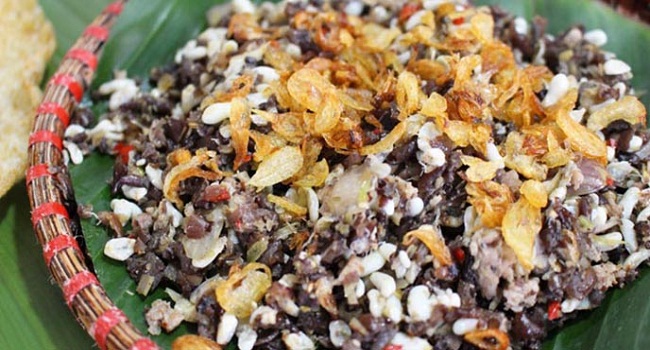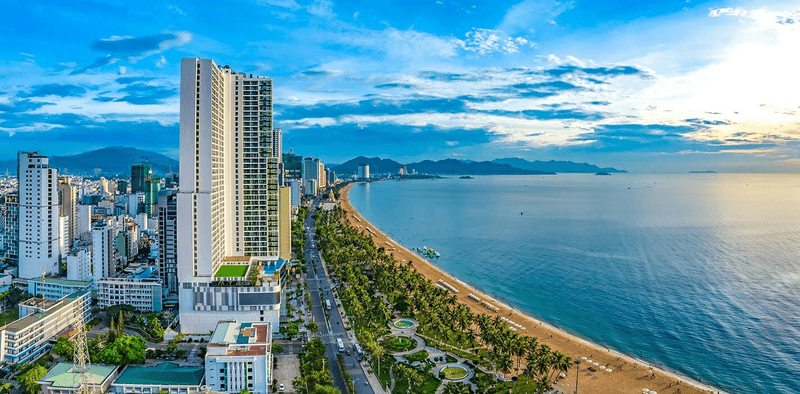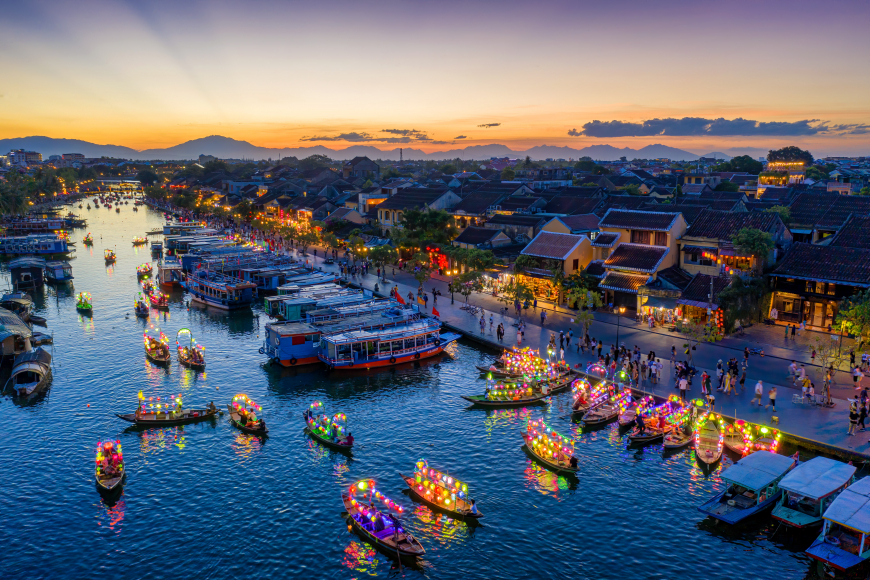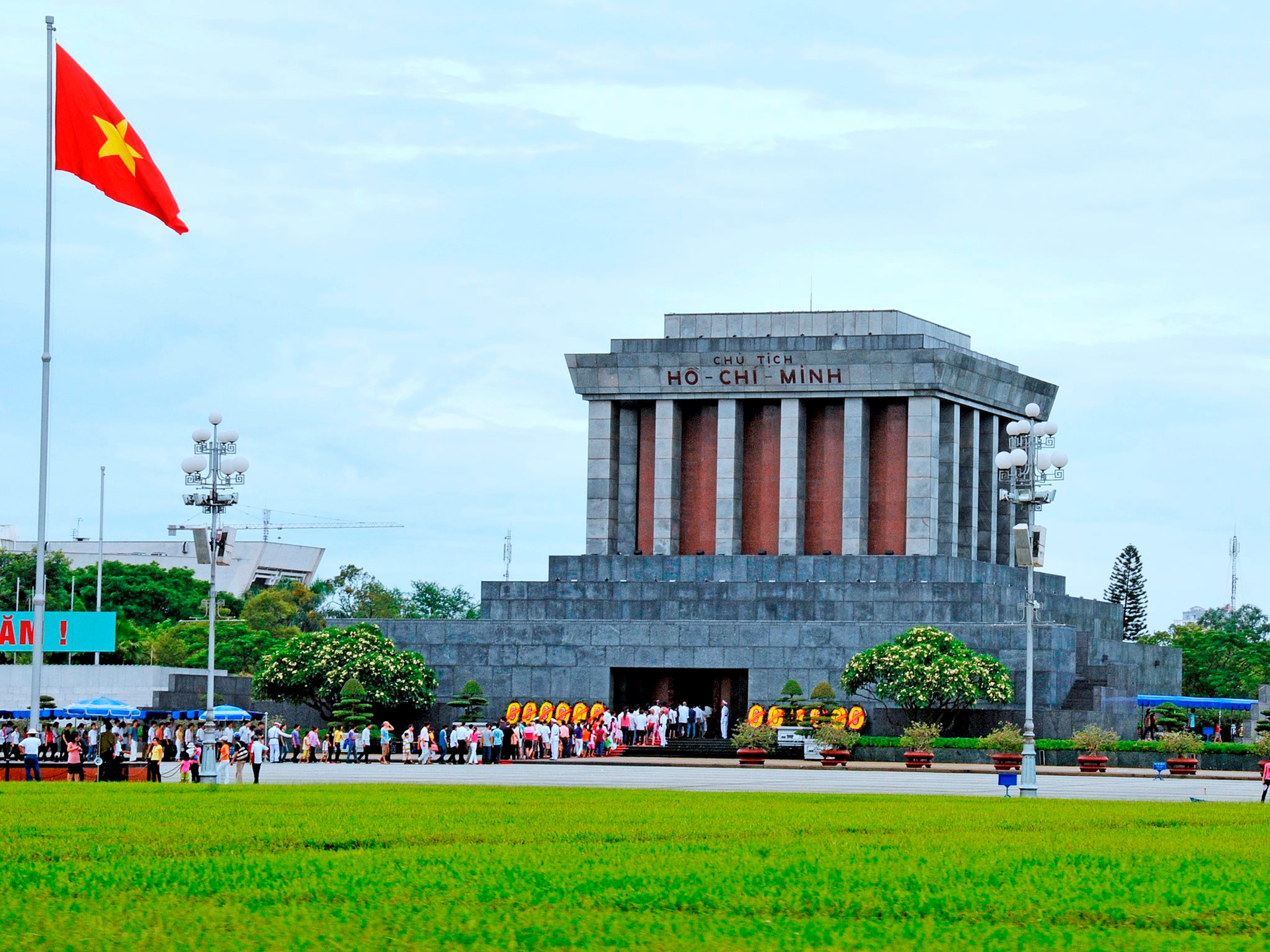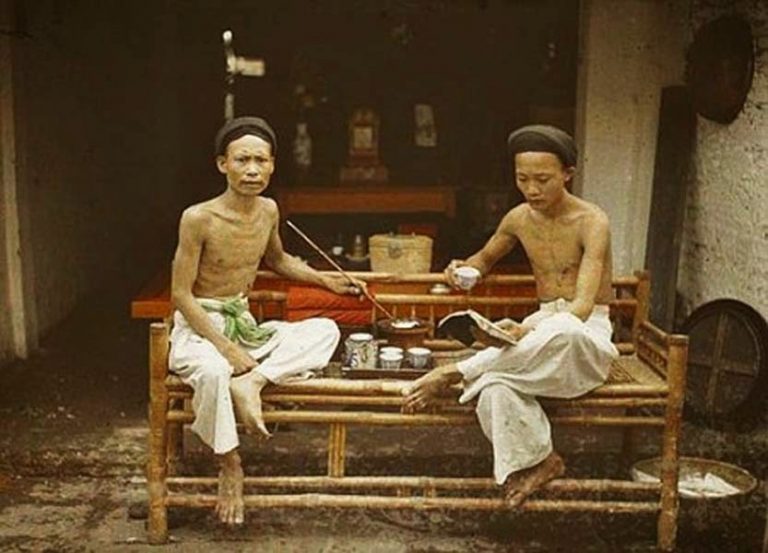
Welcome to Hoi An, a captivating city on Vietnam’s central coast, celebrated for its rich history, vibrant culture, and stunning landscapes. Explore the UNESCO-listed Old Town’s ancient streets, adorned with colorful lanterns and bustling markets, showcasing well-preserved architecture. Discover centuries-old temples and assembly halls, revealing the city’s past as a bustling trading port. Beyond history, enjoy diverse experiences like savoring Vietnamese cuisine or joining a local cooking class. With its timeless charm and warm hospitality, Hoi An invites you to create unforgettable memories in one of Vietnam’s most enchanting destinations. For first-time visitors, here’s a guide to Hoi An things to do.
What to see & what to do in Hoi An Vietnam
Recognized as a UNESCO World Heritage site in 1999, Hoi An is filled with nicely fixed-up homes, stores, and temples, offering sights unique to Vietnam. From ancient Buddhist temples to clean beaches and small museums, there are many unique things to do in Hoi An.
1. Hoi An Ancient Town
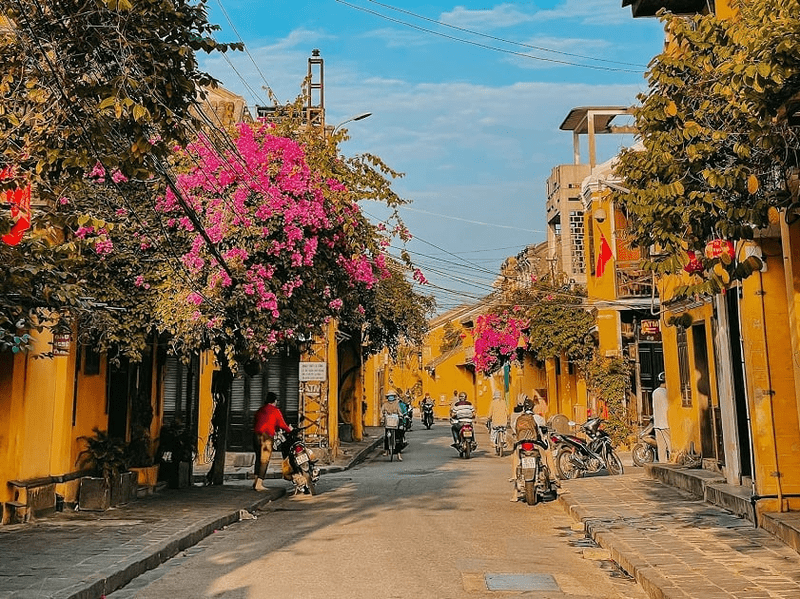
The Hoi An Ancient Town, a UNESCO World Heritage Site, is a charming historical area in Vietnam known for its exceptionally preserved architecture and cultural significance. It was a significant trading port from the 15th to the 19th century, attracting merchants across Asia and Europe. Today, visitors can explore its narrow streets with traditional wooden houses, ancient temples, and historic buildings. The town is especially enchanting in the evening when the streets come alive with the glow of colorful lanterns, creating a magical atmosphere. Hoi An Ancient Town offers a glimpse into Vietnam’s rich history and cultural heritage, making it a must-visit destination for travelers.
Also, there’s a fee to enter the town, but it covers your ten-day visit and includes access to six places of interest and street performances like traditional dancing and games.
2. Visit Historical Sites
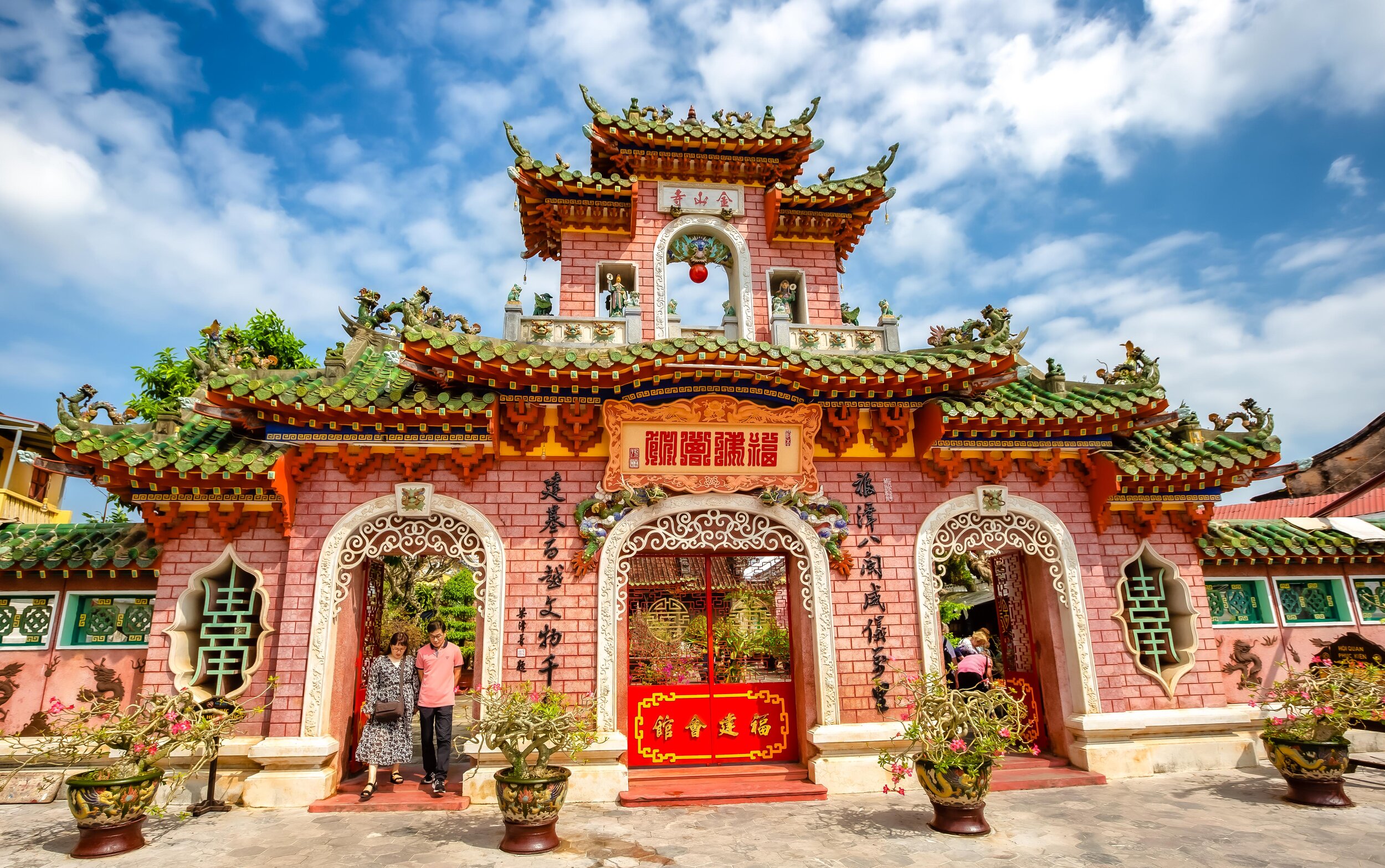
Exploring historical sites like the Japanese Covered Bridge, the Fujian Chinese Congregation Assembly Hall, and the Tan Ky Ancient House in Hoi An is like stepping back in time. The Japanese Covered Bridge is an iconic town symbol, blending Japanese and Vietnamese architectural styles seamlessly. The Fujian Chinese Congregation Assembly Hall showcases intricate craftsmanship and ornate decorations, reflecting the vibrant cultural exchange between China and Vietnam. Meanwhile, the Tan Ky Ancient House provides a glimpse into the daily life of a prosperous merchant family during the 18th century with its well-preserved architecture and furnishings. Each site offers a unique perspective on Hoi An’s rich cultural heritage, making them must-visit destinations for history enthusiasts and travelers alike.
3. Take a Cooking Class

A Vietnamese cooking class is more than just recipes; it’s an immersive dive into Vietnamese culinary culture. Starting at a bustling local market, handpick fresh ingredients to experience the essence of Vietnamese cuisine. Guided by experts, master techniques from rolling spring rolls to balancing flavors in dishes like pho and banh mi. Gain insights into Vietnamese cooking traditions and ingredients. It’s a chance to connect with locals, share stories, and create unforgettable culinary memories. Whether you’re a beginner or a pro, this journey promises inspiration and new skills to wow your loved ones at home.
4. Relax on the Beach

An Bang Beach and Cua Dai Beach offer idyllic settings for relaxation and water activities. An Bang Beach is known for its serene atmosphere and clean sands, perfect for unwinding and soaking up the sun. Cua Dai Beach, on the other hand, boasts a more vibrant atmosphere with a range of water sports available, from surfing to paddleboarding, adding an extra thrill to your beach experience. Whether you prefer a tranquil escape or an active day by the sea, both beaches provide an ideal retreat for visitors seeking coastal bliss.
5. Take a Boat Tour

On a traditional wooden boat, cruising along the Thu Bon River offers a delightful journey through the heart of Vietnamese culture and natural beauty. As you glide along the tranquil waters, you’ll be treated to breathtaking lush greenery, ancient fishing villages, and the serene charm of water coconut groves lining the riverbanks. It’s a peaceful and immersive way to experience the rich tapestry of landscapes and heritage that define this region, allowing you to soak in the sights and sounds leisurely. Don’t forget your camera – there will be plenty of opportunities to capture the timeless beauty of this scenic river journey.
6. Explore Nearby Attractions
Venturing beyond Hoi An opens up a world of diverse attractions, each offering its blend of cultural richness and natural wonders. The Marble Mountains, with their towering limestone peaks and intricate cave systems, are steeped in history and spirituality. Visitors can explore ancient pagodas and enjoy panoramic views of the surrounding landscape.
My Son Sanctuary, a UNESCO World Heritage Site, is a testament to the ancient Cham civilization. Its impressive clusters of Hindu temples date back to the 4th century. Exploring this sacred site provides a fascinating glimpse into Vietnam’s rich cultural heritage and architectural legacy.

A trip to the Cham Islands is essential for a taste of island paradise. Accessible by boat from Hoi An, these pristine isles offer pristine beaches, vibrant coral reefs, and lush forests to explore. Whether snorkeling among colorful marine life, trekking through verdant jungles, or simply relaxing on the sand, the Cham Islands promise an unforgettable escape into nature’s embrace.
7. Visit Tra Que Village
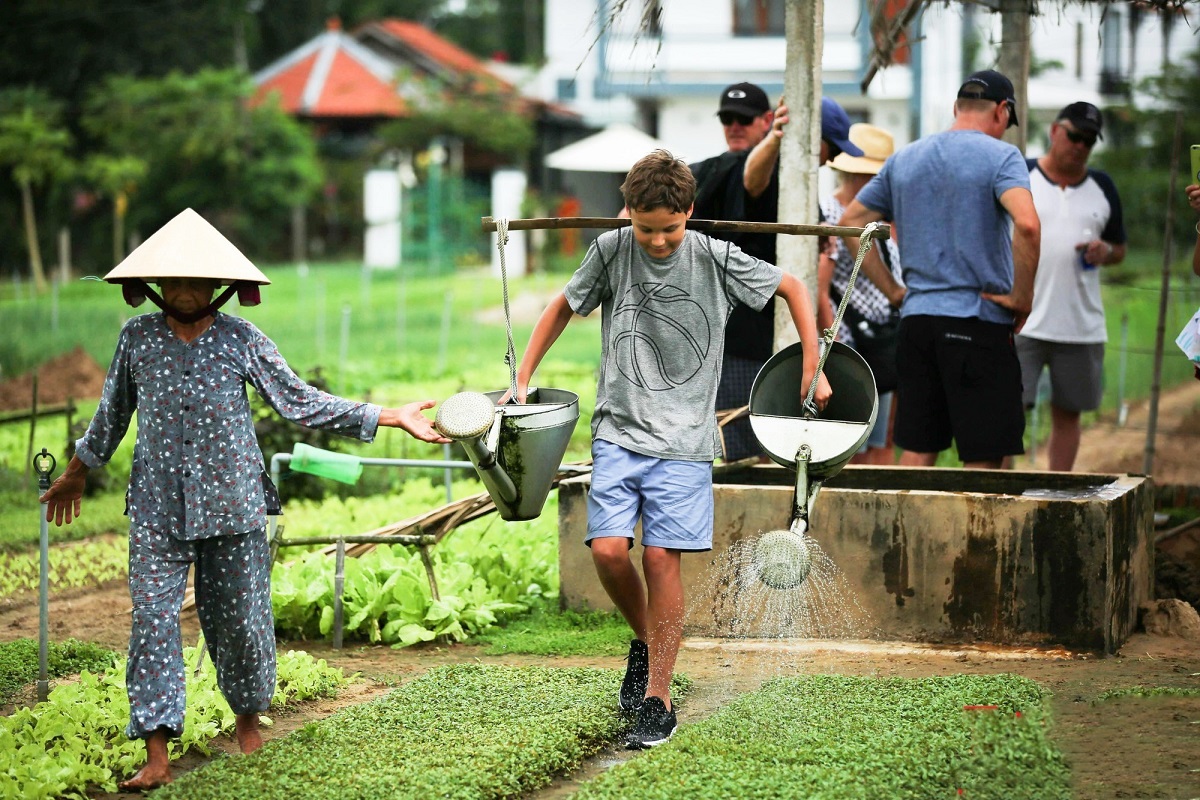
Exploring Tra Que Village is a delightful immersion into the agricultural heart of Vietnam, where you can experience the traditional farming practices and rural lifestyle that have sustained communities for generations. Located just a few kilometers from Hoi An, Tra Que is famous for its organic vegetable cultivation and serene countryside ambiance.
8. Visit a Hoi An Rooftop Cafe – Faifo Coffee Rooftop Garden
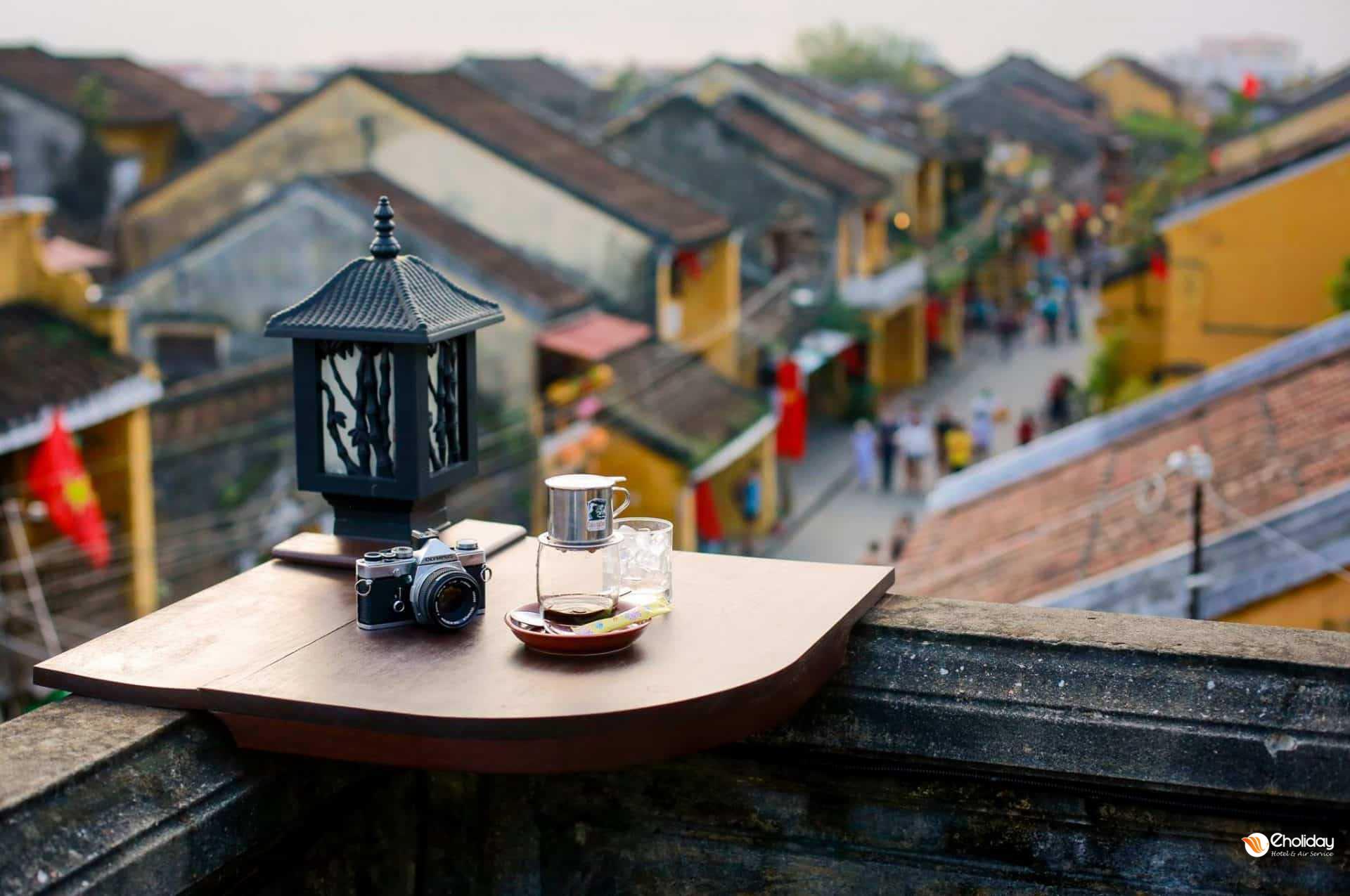
Visiting a rooftop cafe in Hoi An is a wonderful way to enjoy panoramic city views while savoring delicious food and beverages. Located in the heart of Hoi An’s Ancient Town, Faifo Coffee Rooftop Garden offers a tranquil escape from the bustling streets below. Situated atop a historic building, this rooftop cafe provides stunning views of the surrounding rooftops, ancient architecture, and picturesque streets adorned with colorful lanterns.
9. Try Delicious Vietnamese Foods
Don’t miss the opportunity to indulge in some of Vietnam’s most mouthwatering delicacies in Hoi An. Sample the iconic Cao Lau, a noodle dish unique to this city, boasting a tantalizing blend of thick rice noodles, succulent pork, fresh herbs, and crispy croutons bathed in a flavorful broth. Dive into the crispy goodness of Banh Mi sandwiches, bursting with savory fillings like grilled pork, pate, and crunchy pickled vegetables. Savor the delicate flavors of White Rose Dumplings, Mi Quang noodles, and savory Banh Xeo pancakes, each a testament to Hoi An’s vibrant culinary heritage. With every bite, you’ll discover the rich tapestry of flavors that make Vietnamese cuisine so irresistible.
10. Get something Tailor Made
Hoi An is renowned for its skilled tailors and bustling tailor industry, with numerous shops offering custom-made clothing and accessories. Take your time to explore a few before making a decision. Look for shops with a good reputation, positive reviews, and diverse fabrics and styles. Some well-known tailor shops include A Dong Silk, Yaly Couture, and Be Be Tailor. Once you’ve chosen a tailor shop, discuss your preferences with the tailor or staff. They’ll guide you through selecting the fabric, color, and style of the garment you want to have made. Whether it’s a suit, dress, shirt, trousers, or traditional Vietnamese ao dai, you’ll have plenty of options. Getting something tailor-made in Hoi An is not only a practical way to acquire high-quality clothing at a fraction of the cost you’d pay in Western countries, but it’s also a memorable experience that allows you to create a unique and personalized wardrobe souvenir from your trip to Vietnam.
What to eat in Hoi An
You’ll find a tantalizing array of Vietnamese dishes and local specialties to savor in Hoi An. Don’t miss out on:
1. Cao Lau (Rice noodles with barbecued pork, greens and croutons)

Cao Lau is a signature dish of Hoi An and a must-try dish when visiting the city. This unique dish combines Vietnamese, Chinese, and Japanese cuisine elements, creating a harmonious blend of flavors and textures.
Cao Lau typically consists of thick rice noodles, which are locally sourced and believed to be soaked in water from ancient Cham wells found only in Hoi An. The noodles are then topped with slices of succulent pork marinated in a special blend of spices, creating a rich and flavorful meat component. Fresh herbs such as mint and basil are added to enhance the dish’s aromatic profile, and crunchy croutons for texture.
What sets Cao Lau apart is its distinctive broth, which is made using a combination of pork stock, soy sauce, and other secret ingredients. The broth is simmered to perfection, infusing the noodles and toppings with a depth of flavor that is both comforting and satisfying.
To experience Cao Lau at its best, head to one of the local eateries in Hoi An’s Ancient Town. Here, you can savor this iconic dish in a traditional setting. Pair it with a cold glass of Vietnamese iced coffee or a refreshing local beer for the perfect culinary experience. Cao Lau is not just a meal; it’s a taste of Hoi An’s rich cultural heritage and culinary craftsmanship.
2. Banh Bao Vac (White Rose Dumplings)
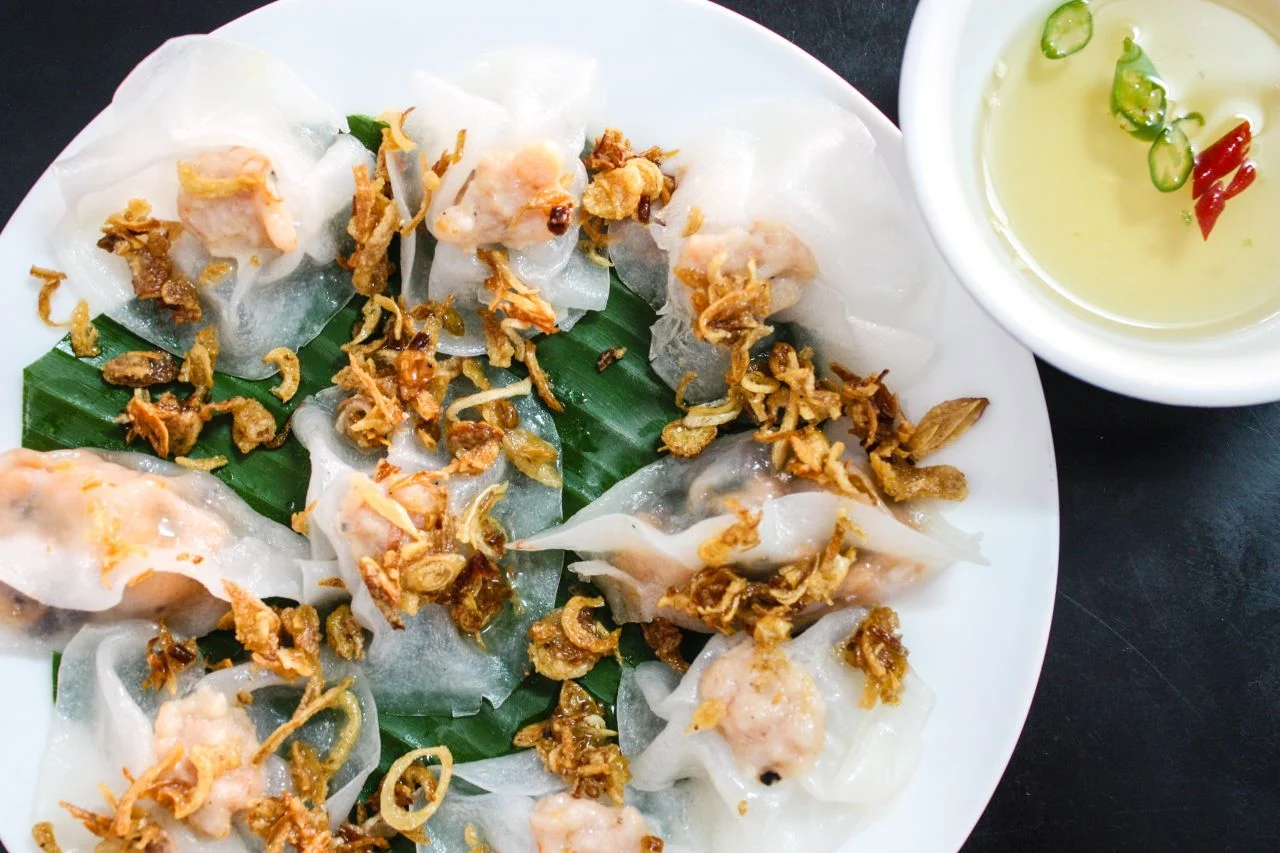
Banh Bao Vac, also known as White Rose Dumplings, is another culinary gem that originates from Hoi An and is a must-try for visitors to the city. These delicate dumplings are named for their resemblance to white rose petals and are a testament to the skill and craftsmanship of Hoi An’s culinary artisans. White Rose Dumplings are made from a simple mixture of rice flour and tapioca starch, kneaded into a smooth dough, and then rolled into thin sheets. The filling typically consists of minced shrimp mixed with spices and aromatics, giving the dumplings a savory and aromatic flavor.
What makes Banh Bao Vac truly special is the meticulous handcrafting process involved in their preparation. Skilled artisans painstakingly shape each dumpling by hand, delicately folding the dough around the filling to create intricate rose-like patterns. The dumplings are then steamed until tender, resulting in a dish that is as visually stunning as delicious.
3. Com ga (Chicken Rice)

Com Ga Hoi An, or Hoi An Chicken Rice, is a classic dish that showcases the flavors of central Vietnamese cuisine and is a beloved staple in the culinary scene of Hoi An. The flavorful dish is served with tender poached chicken, fragrant jasmine rice, fresh herbs, cucumber slices, and a tangy dipping sauce.
What sets Com Ga Hoi An apart is the meticulous preparation of the chicken, which is simmered in a fragrant broth infused with ginger, lemongrass, and other aromatic spices until perfectly cooked. The resulting chicken is juicy, tender, and flavorful, making it the dish’s star. The jasmine rice, cooked with chicken stock and pandan leaves, is fragrant and fluffy. It serves as the perfect base for succulent chicken and vibrant herbs. The dish is typically garnished with crispy fried shallots for added texture and flavor.
Com Ga Hoi An is often served with a side of dipping sauce made from a blend of fish sauce, lime juice, garlic, chili, and sugar, which adds a zesty kick to each bite. The combination of tender chicken, fragrant rice, fresh herbs, and savory dipping sauce creates a harmonious balance of flavors and textures that is both satisfying and comforting.
4. Mi Quang (Vietnamese turmeric noodles)
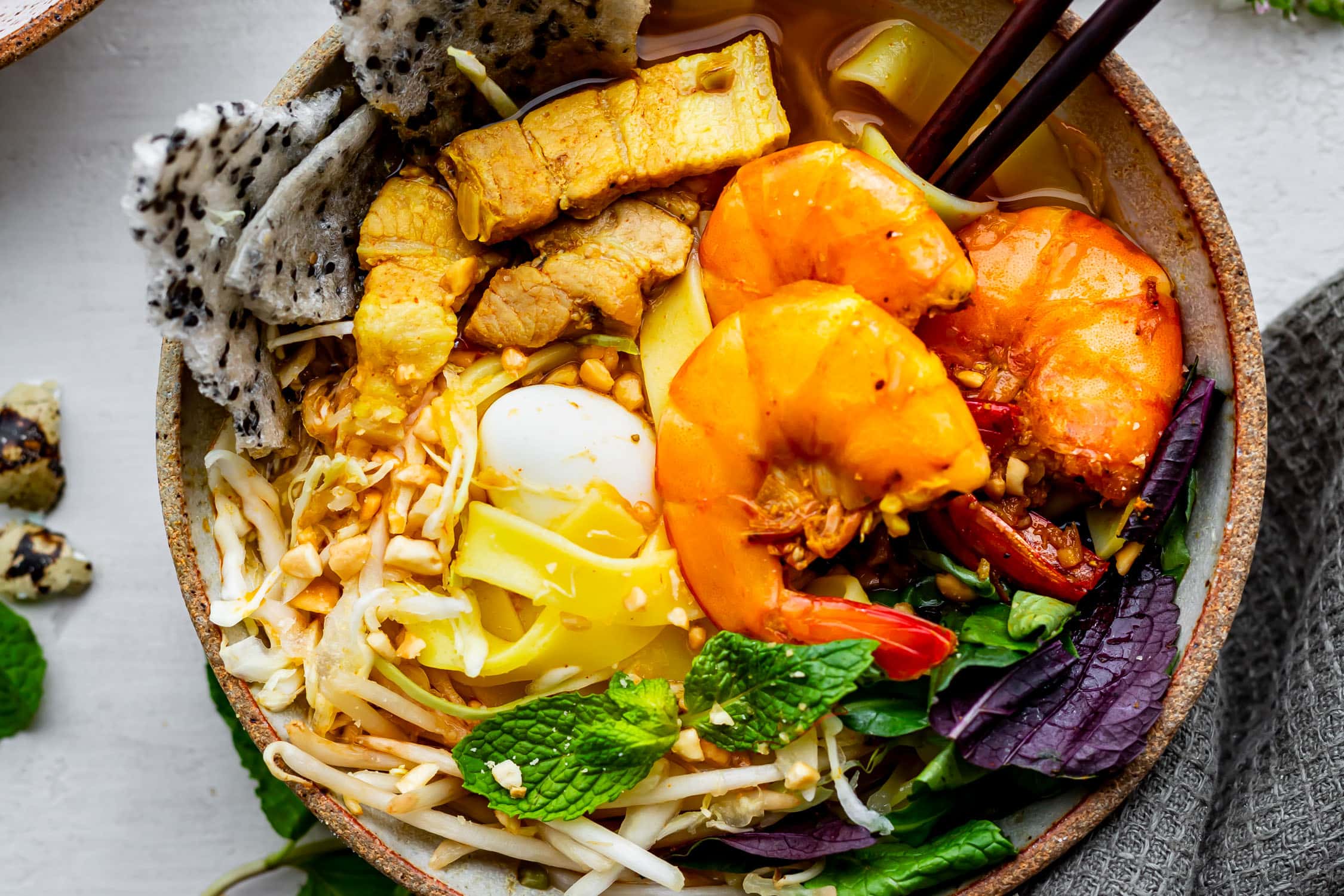
Mi Quang is a beloved Vietnamese noodle dish from the central region, particularly Quang Nam province, with Hoi An being a renowned hub for its preparation. This flavorful dish features wide rice noodles coated in a golden-yellow hue from turmeric and is served with a modest amount of savory broth. Toppings include a variety of proteins like shrimp, pork, or chicken, along with fresh herbs, vegetables, and crunchy rice crackers. It’s often accompanied by lime wedges, chili peppers, and spicy-sweet dipping sauce, creating a harmonious balance of flavors and textures. Mi Quang is cherished for its vibrant colors, aromatic broth, and satisfying taste, making it a must-try for visitors exploring the culinary delights of Hoi An.
5. Banh Xeo (Crispy pancake)
Banh Xeo, often called Vietnamese Crispy Pancake, is a delightful and savory dish popular throughout Vietnam, including Hoi An. This iconic dish features a thin, crispy rice flour pancake filled with a delicious combination of ingredients, typically including shrimp, pork, bean sprouts, and sliced onions. Banh Xeo is typically served hot and fresh, accompanied by a plate of fresh herbs such as lettuce, mint, and cilantro, as well as nuoc cham, a dipping sauce made from fish sauce, lime juice, sugar, garlic, and chili. Diners can customize their Banh Xeo by wrapping a portion of the pancake and filling in a lettuce leaf, along with herbs, and dipping it into the nuoc cham before enjoying.
Banh Xeo is loved for its crispy texture, fragrant filling, and vibrant flavors, making it a popular choice for locals and visitors alike. Whether enjoyed as a street food snack or as part of a meal in a restaurant, Banh Xeo is sure to tantalize your taste buds and leave you craving more of Hoi An’s culinary delights.
Read more: Top 10+ Incredibly Delicious And Crispy Banh Mi Hoi An Shops
Hoi An Travel Guide
1. How to get to Hoi An
Getting to Hoi An is relatively straightforward, as it’s a popular tourist destination in central Vietnam. Here are several common ways to reach Hoi An:
By Air
The nearest airport to Hoi An is Da Nang International Airport (DAD), approximately 30 kilometers away. Many domestic airlines operate flights to Da Nang from major cities in Vietnam, such as Hanoi, Ho Chi Minh City, and Hue, as well as international destinations. From Da Nang Airport, you can take a taxi, shuttle bus, or private transfer to Hoi An, which usually takes 45 minutes to 1 hour. The cost of a taxi or shuttle varies but typically ranges from $15 to $ 25.
By Train
Although Hoi An does not have a train station, you can travel to nearby Da Nang by train. Da Nang is a major railway hub in central Vietnam, with regular trains connecting it to cities such as Hanoi, Hue, and Ho Chi Minh City. A ticket for this route can cost from VND 689,000 to VND 1,315,000, depending on seat location, seat type, and booking timing. From Da Nang Railway Station, you can take a taxi, shuttle bus, or private transfer to Hoi An.
By Bus
Through its extensive bus network, Hoi An is well-connected to other cities and regions in Vietnam. Several bus companies operate services to Hoi An from major cities such as Da Nang, Hue, Nha Trang, and Ho Chi Minh City. Journey times and ticket prices vary depending on the distance traveled and the type of bus service.
By Car or Motorbike
If you prefer the flexibility of traveling by car or motorbike, you can rent a vehicle and drive to Hoi An. The city is easily accessible by road, with well-maintained highways connecting it to neighboring cities and regions. However, Vietnam’s traffic conditions and driving standards can be challenging, especially for inexperienced drivers. Prices for private transfers vary depending on the distance and type of vehicle but can range from $20 to $50 or more.
Once you arrive in Hoi An, you can explore the city on foot, by bicycle, or by using local transportation options such as taxis and motorbike taxis. The compact size of Hoi An’s Ancient Town makes it easy to navigate, allowing you to discover its charming streets, historic buildings, and vibrant markets at your own pace.
Read more: Travel Agency Vietnam: Best Travel Agency for Vietnam Tours
2. How to get around Hoi An
Getting around Hoi An is relatively easy and convenient, as the city is compact and pedestrian-friendly. Here are some common modes of transportation you can use to explore Hoi An:
Walking
Hoi An’s Ancient Town is best explored on foot, as many attractions, shops, restaurants, and cafes are nearby. Wander through the narrow streets lined with colorful buildings, ancient temples, and bustling markets, and take your time to soak in the city’s charm and atmosphere.
Bicycle
Renting a bicycle is a popular way to get around Hoi An. It allows you to explore the city at your own pace while enjoying the freedom to navigate narrow alleyways and side streets. Many hotels and guesthouses offer bicycle rentals, or you can easily find bike rental shops in the city center. Cycling is also a great way to explore the surrounding countryside and nearby attractions.
Motorbike
For those comfortable with motorbike riding, renting a motorbike provides flexibility and convenience for getting around Hoi An and exploring the surrounding areas. However, traffic in Vietnam can be chaotic, so be cautious and adhere to local traffic laws. Helmets are mandatory, and rental agencies usually provide them along with the motorbike.
Taxi
Taxis are readily available in Hoi An and can be a convenient option for longer journeys or traveling to destinations outside the city center. Use reputable taxi companies and ask for the meter to be turned on to ensure a fair fare. For added convenience, you can also use ride-hailing apps like Grab.
Cyclo
For a leisurely and nostalgic experience, consider cycling around Hoi An. These traditional Vietnamese cycle rickshaws are operated by drivers who pedal you around the city while you sit back and enjoy the sights. Negotiate the fare before starting your ride.
Boat
To explore the waterways around Hoi An, you can take a boat tour along the Thu Bon River or visit nearby islands like the Cham Islands. Boat tours are a relaxing way to experience the region’s scenic beauty and learn about local culture and traditions.
With these transportation options, you can easily navigate Hoi An and make the most of your time exploring its charming streets, historic sites, and beautiful surroundings.
3. When is the best time to visit Hoi An?
Visiting Hoi An during the dry season, particularly from February to April, offers many advantages. The pleasant weather characterized by low rainfall, mild temperatures, and lower humidity creates ideal conditions for exploring the city’s charming streets, historic sites, and scenic surroundings. With fewer crowds compared to the peak tourism season, visitors can enjoy a more relaxed and immersive experience, whether strolling through the Ancient Town, cycling through the countryside, or lounging on the beaches. Additionally, the mild weather during this time makes outdoor activities such as boat tours along the Thu Bon River or visiting nearby attractions like the Marble Mountains and My Son Sanctuary more enjoyable. Overall, February to April is a wonderful time to visit Hoi An for those seeking a balance of favorable weather, fewer crowds, and ample opportunities for exploration and relaxation.
Hoi An Vietnam travel itinerary with Vietnam tour 247
Vietnam Tour 247 is a leading travel agency in Vietnam, specializing in crafting personalized private tours and multi-day excursions across Vietnam, Laos, Cambodia, Thailand, and Bali. As proud members of the respected Allure Vietnam Travel Group since 2016, our commitment remains unwavering in providing exceptional travel experiences tailored to the unique preferences of each of our clients.
Our extensive range of Vietnam tour packages covers the most sought-after destinations and highlights throughout Vietnam and Southeast Asia. Whether you’re drawn to the bustling energy of urban centers, the tranquil beauty of rural landscapes, the rich tapestry of cultural experiences, or the awe-inspiring wonders of nature, our offerings cater to every traveler’s desires. Designed with utmost flexibility, our tours are carefully curated to seamlessly align with your preferences, budget, and scheduling needs. Choose from our meticulously crafted itineraries or collaborate with our experienced travel consultants to create a journey that perfectly suits your vision.
For those embarking on a journey to Hoi An, a true gem nestled within Vietnam’s cultural fabric, we offer an array of tour options highlighting its unique splendor. From the comprehensive “Majestic Vietnam” spanning 15 days to the enchanting “Charming Vietnam” adventure unfolding over 12 days, along with enticing options like “Vietnam Legacy” and “Vietnam Real Food Adventure,” our tours promise an unforgettable exploration of Hoi An’s wonders. Additional tailored tours such as “Explore Central Vietnam” over 5 days and “From Hue to Hoi An” across 6 days provide further opportunities to discover the region’s beauty.
With its rich history, architectural marvels, and cultural significance, Hoi An is an essential destination on any journey through Vietnam. Trust Vietnam Tour 247 to curate an immersive and enriching experience as you uncover the captivating allure of Hoi An and beyond.
In Conclusion
Hoi An promises an unforgettable journey through one of Vietnam’s most captivating destinations. Hoi An offers a wealth of cultural, historical, and natural treasures, from its charming Ancient Town adorned with colorful lanterns to its picturesque countryside dotted with rice fields and traditional villages. Whether wandering through its narrow streets, sampling delectable Vietnamese cuisine, or experiencing the art of tailor-made clothing, In addition to its rich heritage, the city has a vibrant atmosphere that attracts visitors. With its storied past, architectural marvels, and warm hospitality, Hoi An leaves an indelible mark on all who venture within its borders. Trust in the expertise of a reputable tour operator like Vietnam Tour 247 to guide you on an enriching and memorable journey through the enchanting wonders of Hoi An.
Read more: Hoi An: What You Need To Know



